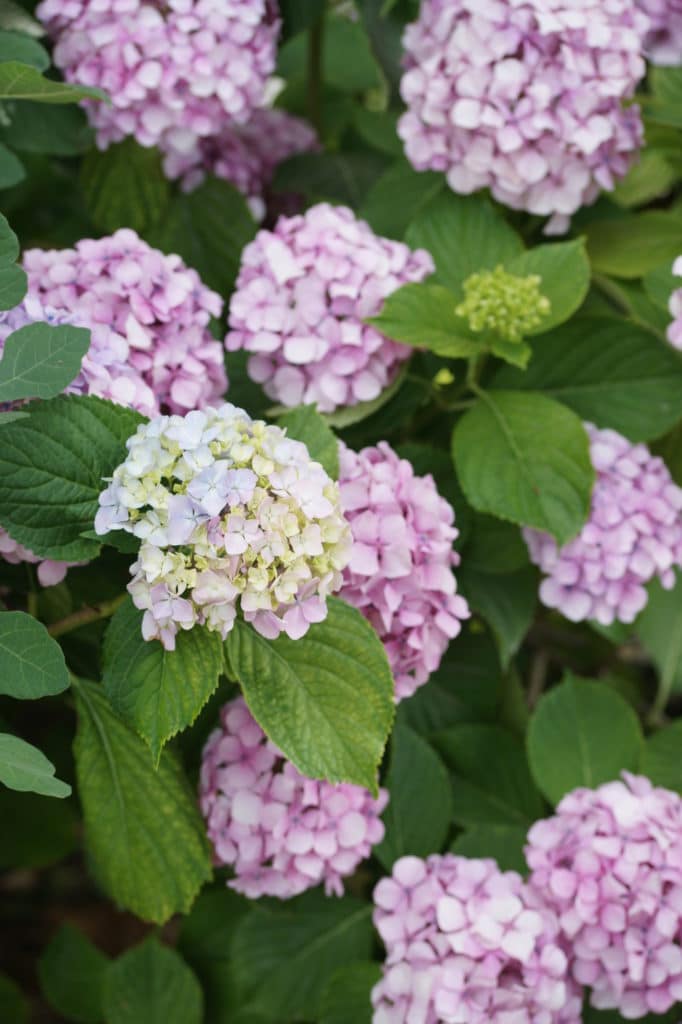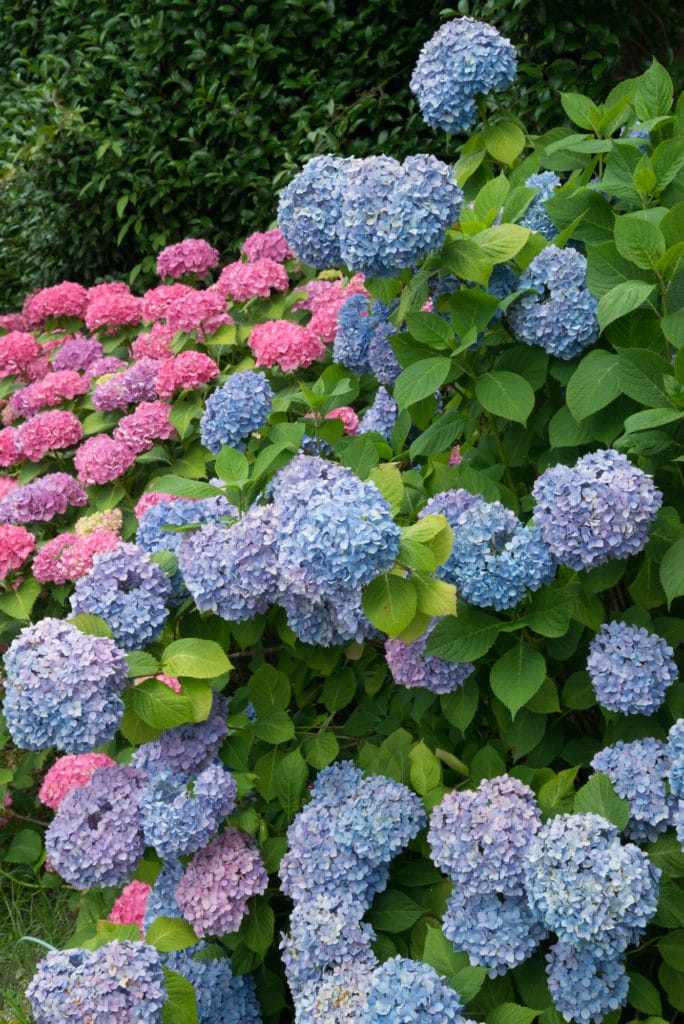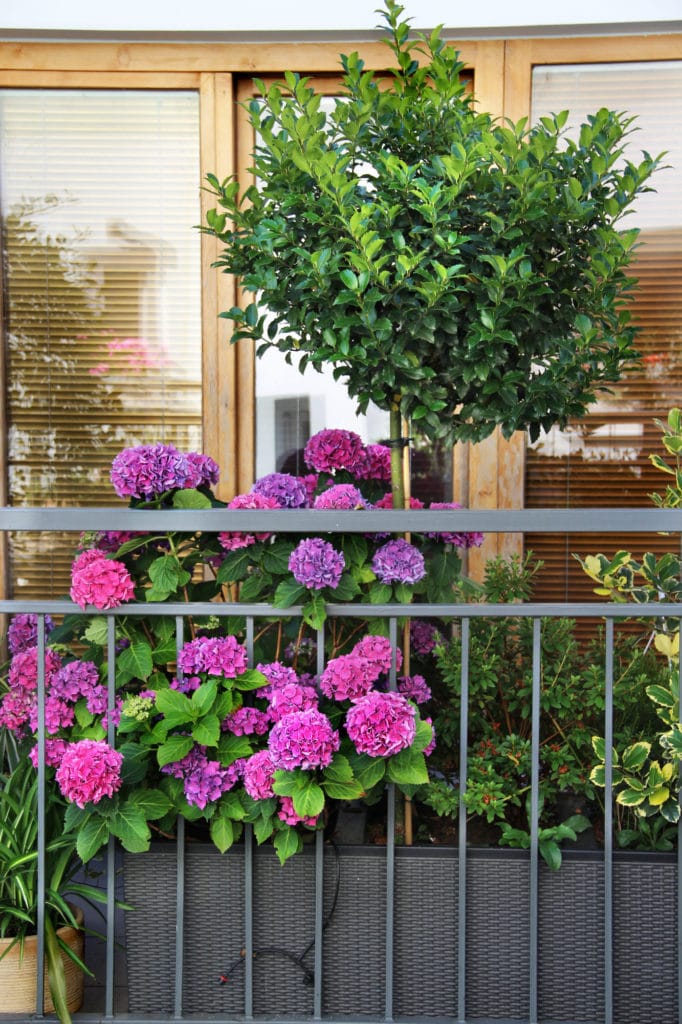How To Grow Hydrangeas in Your Garden
Few flowers lend as much vibrancy and texture to gardens as hydrangeas do.
This perennial shrub is a stunner! Learn how to care for hydrangeas and you’ll look foward to bloom time every year.
Hydrangea shrubs feature generous flower blooms and deep foliage that come back year after year.
It’s why so many gardeners love adding them to their landscape design!
(This post may contain affiliate links.)
The most commonly known hydrangea is called the Hydrangea Macrophylla, and its the kind you’re probably most familiar with.
It produces round clusters of fluffy flower petals that begin to bloom early to mid-summer.
Its stems can reach up to about 6 to 10 feet tall, making them quite the sight to see.

They don’t just look good in the ground, however.
If you don’t have a large garden, you can grow hydrangeas in containers on your front patio or balcony!
Thankfully, they’re easy to nurture and care for, once you understand what they need to thrive.
Plus, you can find them in different colors. Quite the garden treasure, hydrangeas can be found in shades of white, blue, and pink.
Can you believe you can manipulate the color of your hydrangeas simply be controlling how acidic or alkaline your soil is? It’s true!
If you crave pink hydrangeas, add garden lime to the soil during the Fall to make the soil more alkaline.
If you prefer pops of blue throughout your garden, add aluminum sulfate to the soil to make it acidic. It’s that simple!

Just make sure you start doing this a few months before your plant begins to bloom.
How to Plant Hydrangeas
There are two ideal times to plant your hydrangeas: Spring and Fall.
It’s very important that you plant your hydrangeas in an area that gets shade during the afternoon, as this flower is not a full-sun plant that can tolerate intense heat for more than a few hours a day.
They also don’t appreciate heavy winds because their stems are susceptible to breaking, so try to plant your hydrangea near other plants or trees that can offer some protection.
TIP: Try planting your flowers on the eastern side your house if they need shade during the afternoon; shadows can provide the protection your plants need from the crippling heat.

This beautiful flower needs a little TLC when it comes to soil. It needs moist, well-drained soil and also benefits from organic fertilizer that can provide it with nutrients throughout the Summer.
How to Water Hydrangeas
Since hydrangeas bloom in the Summer, you’ll want to water deeply once a week so that the roots retain plenty of moisture.
Hydrangeas need moist soil in order to thrive, so it’s not a plant that can tolerate drought. Water is their best friend!
However, you’ll also need to make sure to provide good drainage, because too much water in the soil can encourage mold growth and root rot.
If your area is experiencing a heatwave, water in between your weekly waterings if you see that the heat is drying out the soil.
How to Prune Hydrangeas
Hydrangeas start to grow their flower buds a year in advance, usually at the end of summer.
After your hydrangeas have bloomed for the year, cut back the dead blooms and old stems WITHOUT damaging the forming buds.
This is very important! If you damage the buds, you’ll compromise the quality of next year’s blooms.
If you notice that your hydrangeas didn’t bloom as vibrantly as they did in the past, it may be time to do some serious pruning.
Try cutting old stems to encourage the growth of new stems that will hopefully produce healthy buds.
TIP: You’ll want to do this in late Winter to avoid buds from getting damaged by frost.
Hydrangeas Winter Care
Harsh winter weather can damage the integrity of your hydrangea plant.
You can remedy this by adding burlap to the soil around your stems, as well as filling the area with dried leaves so that snow or frost has a harder time reaching your stems and roots.
You’ll want to preserve your buds as much as you can if you live in an area with very low temperatures in the Winter.
That about covers it!
Once you understand what hydrangeas need in order to thrive and produce beautiful blooms, you’ll be happy to have this beautiful flower as part of your garden bed.
If you’re looking for more pops of color and different petal shapes, then you should take a look at these low-maintenance perennials.
They’re some of the most interesting-looking flowers PLUS they’re especially easy to take care of, as most of them are quite drought-tolerant, making them perfect choices for many parts of the country.
If you don’t have much shade to offer your plants, then full sun perennials are the way to go – so head to this post of 15 full sun perennials that won’t disappoint your cravings for a vibrant garden.
Thank you, information very helpful!